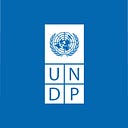A family’s struggle for a safe and dignified life
Two years ago, a government programme selected Tikaram Thapa’s damaged stone and mud home to be rebuilt. His house was one of 66,000 homes destroyed in the district of Gorkha by the earthquake that struck Nepal on 25 April 2015. In April 2019, he finally stepped into his new home. Little did he know then that a tragedy that almost destroyed his life would provide him with some security to meet another challenge that was about to come: the COVID-19 pandemic now cutting across the world.
Tikaram’s life has been hard. He is short on money, his wife copes with mental health issues and one of his three children has a disability. But things became immeasurably more difficult after the earthquake. For four years, he and his family lived what he calls a miserable life, waiting for their home to be rebuilt. Like thousands of Nepal’s poor, Tikaram was helpless. He had no option but to make temporary repairs to the one room into which the family crammed. He recalls living in a constant fear that this room too would collapse with the aftershocks and onset of the monsoons. When he learned he was entitled to a housing grant by the Government of Nepal, he felt as if he had won the lottery.
Reconstruction
Funding for the project was made possible with support from the Government of India. Since 2018, UNDP has been implementing the Nepal Housing Reconstruction Project in the Gorkha district and providing support to about 27,000 households to ensure resilient reconstruction.
The project consulted with local authorities and the community to provide Tikaram with free timber and other building material. He also received money from a special fund set up by the municipality, an interest-free loan for vulnerable households, which meant he could finance the reconstruction.
Tikram’s friends and neighbours helped with excavation and foundation work, which enabled him to cut costs. With regular on-site support, Tikaram was able to rebuild his two-room house in three months. He also received an additional US$2,500 to defray expenses.
COVID-19 lockdown
In mid-2019, Tikaram and his family moved in. On the fifth anniversary of the quake he expressed gratitude. “We’d have been still living under a leaky roof and in fear of the walls collapsing had we not managed to build this house in time,” said Tikaram. These days, the home is a refuge, as he and his family comply with the government-imposed lockdown in the wake of the global coronavirus pandemic.
A bigger house has made the strict lockdown much easier. Tikaram’s two-room house has big windows, which provide better light, ventilation, and living conditions catering to their needs, where they can, if needed, adhere to social distancing norms.
“We feel safe in our new home, where we have our separate rooms and in this pandemic it is a relief that our house is spacious enough to keep distance, should anyone fall sick,” said Nir Bahadur, one of Tikaram’s sons. “My family’s life has changed.”
To date, 91 percent of the households participating in the Nepal Housing Reconstruction Project were supported to rebuild and move into their new quarters. In addition to being resilient to earthquakes, the new homes have helped several thousands of families in Nepal to better cope with the COVID-19 pandemic through better living conditions.
Photos: UNDP Nepal
